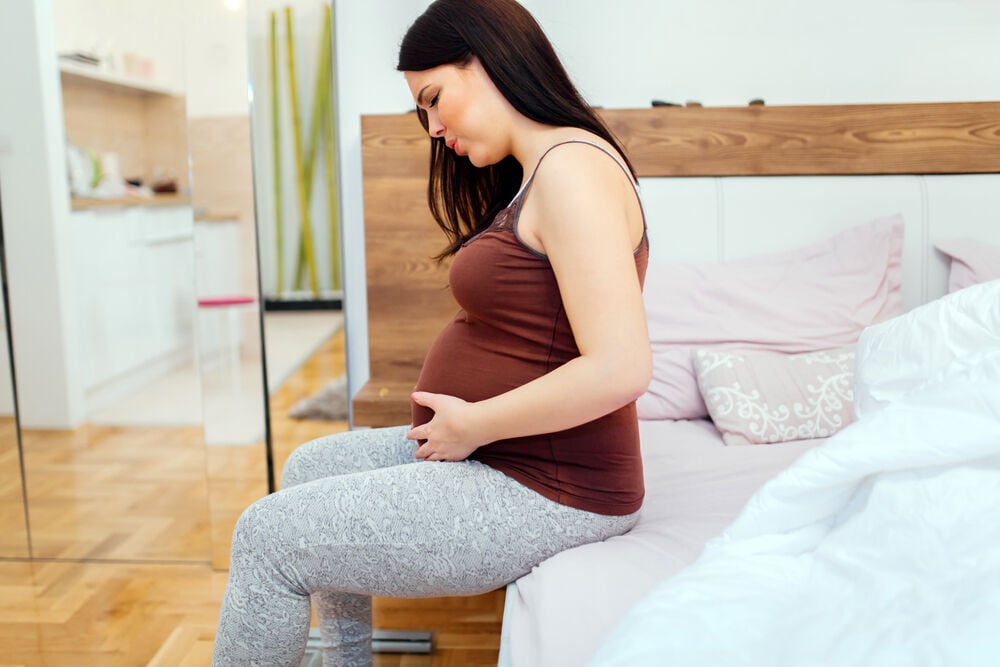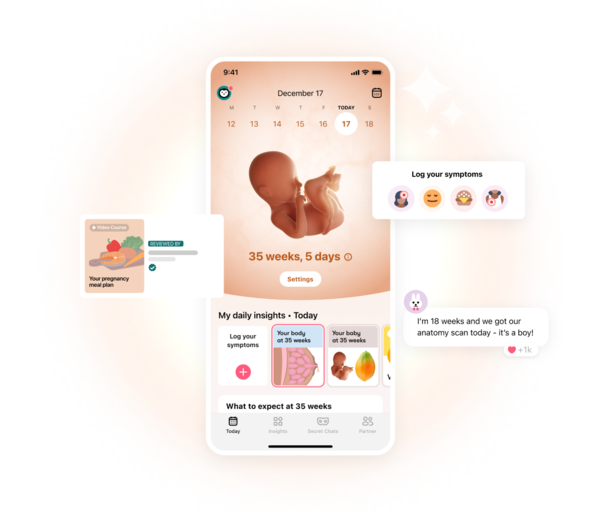It’s quite common to notice a nagging pain in your pelvis during pregnancy. Fortunately, there are ways to make this discomfort more bearable. Keep reading to find out more about pelvic pain during pregnancy.
-
Tracking cycle
-
Getting pregnant
-
Pregnancy
-
Help Center
-
Flo for Partners
-
Anonymous Mode
-
Flo app reviews
-
Flo Premium New
-
Secret Chats New
-
Symptom Checker New
-
Your cycle
-
Health 360°
-
Getting pregnant
-
Pregnancy
-
Being a mom
-
LGBTQ+
-
Quizzes
-
Ovulation calculator
-
hCG calculator
-
Pregnancy test calculator
-
Menstrual cycle calculator
-
Period calculator
-
Implantation calculator
-
Pregnancy weeks to months calculator
-
Pregnancy due date calculator
-
IVF and FET due date calculator
-
Due date calculator by ultrasound
-
Medical Affairs
-
Science & Research
-
Pass It On Project New
-
Privacy Portal
-
Press Center
-
Flo Accuracy
-
Careers
-
Contact Us
Pelvic Pain During Pregnancy: Why It Happens and What to Do About It


Every piece of content at Flo Health adheres to the highest editorial standards for language, style, and medical accuracy. To learn what we do to deliver the best health and lifestyle insights to you, check out our content review principles.
Types of pelvic pain
Pelvic pain is classified as either acute and chronic. Generally, the former refers to short-term pain, while the latter refers to long-term pain.
Acute pelvic pain is sudden, sharp, and at times, severe. When its underlying cause is addressed, the pain goes away — usually within about six months.
Chronic pelvic pain, on the other hand, lasts longer, appearing constantly or intermittently. Unfortunately, chronic pain can persist even after the source of the problem has been identified.
Who’s at risk for pelvic pain during pregnancy?
During pregnancy, it’s common to experience mild discomfort in your pelvic area, mostly because a growing baby takes up a lot of space. If you have an existing condition such as endometriosis or fibroids, you may notice your pelvic pain worsening while pregnant.
Causes of pelvic pain during pregnancy
Take a quiz
Find out what you can do with our Health Assistant

No matter the cause, pelvic pain can create additional stress and makes it hard to sleep.
An array of health issues could potentially be responsible for pelvic pain. They include acute conditions like urinary tract infections and kidney stones and chronic problems like endometriosis or fibroids, to name a few. These are some of the most common causes for pelvic and vaginal pain during pregnancy.
Expanding uterus
As pregnancy progresses, the uterus will expand to accommodate the growing baby. Ordinarily, the uterus is about the size of a pear. By the 12th week, it’s roughly the size of a grapefruit. In the third trimester, it’s as big as a watermelon! The stretching of the uterus is bound to produce some discomfort in the lower abdomen, in the form of aches and twinges.
Endometriosis
Endometriosis causes the tissue that lines the uterus to spread to other organs, such as the ovaries and uterine tubes. Symptoms worsen in the first trimester, leading to pelvic pain and cramping. This is likely due to higher estrogen levels or rapid growth of the uterus. Later on, symptoms may potentially improve, perhaps due to increased progesterone.
Urinary tract infection (UTI)
Urinary tract infections (UTIs), also known as bladder infections, are sometimes to blame for pelvic pain during pregnancy.
UTIs occur when bacteria, such as E. coli, make their way inside the urinary tract and multiply in the bladder. This is particularly common between weeks 6 and 24, and it’s usually treated with antibiotics.
The infection creates a persistent urge to pee or a burning sensation when you do, along with pain near your pubic bone.
Pelvic inflammatory disease (PID)
Pelvic inflammatory disease (PID) is a complication of STIs like gonorrhea and chlamydia. The same bacteria responsible for transmitting STIs can spread from your vagina to your uterus, ovaries, or uterine tubes and form pus-filled pockets (or abscesses).
Left untreated, this causes scar tissue to accumulate on your reproductive organs, producing lower abdominal or pelvic pain that can persist for months, or even years.
Interstitial cystitis
People with interstitial cystitis (bladder pain syndrome) experience frequent urination, along with pain and pressure in the lower abdomen/back, bladder, and pelvic region. Its origins are unknown, and treatment is limited to symptom relief in the form of prescription drugs or specific lifestyle changes.
Kidney stones
Composed of minerals like calcium and salts found in urine, kidney stones start out small, but enlarge over time. Occasionally, a kidney stone may pass into the ureter — the tube that connects a kidney to the bladder — and become lodged. It then causes a sharp, cramping pain in the back and side before moving to the lower abdomen or groin.
Fibroids
Uterine fibroids are noncancerous growths that progress quickly and can trigger a condition called red degeneration, usually in the second trimester. Symptoms include severe nausea, vaginal bleeding, and vomiting.
The fibroids themselves, however, attach to the wall of your uterus or in your uterine cavity, resulting in pressure and pelvic pain during pregnancy.
Ovarian cysts
Though not always the case, ovarian cysts are capable of causing pain or pressure on one side of your abdomen. And if a cyst ruptures, you’ll likely feel sudden and severe pain.
Constipation
By definition, constipation is less than three bowel movements per week, and roughly half of pregnant women experience it. Why does this happen? As the uterus expands, it presses against the intestines, interfering with their normal function. Alternatively, pregnancy hormones relax the intestinal muscles, slowing down the movement of waste through the body.
Constipation typically produces lower back and abdominal pain or discomfort. Although the use of laxatives isn’t recommended during pregnancy, your doctor can suggest other remedies.
How to treat pelvic pain during pregnancy
If you’re experiencing pelvic pain during pregnancy, discuss it with your doctor. Treatment options vary greatly depending on the underlying condition and include possible lifestyle changes, medications, or surgery.
When to see a doctor
During pregnancy, mild twinges in the lower abdomen or pelvic area are rarely serious. However, sharp or chronic pelvic pain, especially when accompanied by spotting or bleeding, could indicate pregnancy complications and requires immediate medical attention.


Hey, I'm Anique
I started using Flo app to track my period and ovulation because we wanted to have a baby.


The Flo app helped me learn about my body and spot ovulation signs during our conception journey.


I vividly
remember the day
that we switched
Flo into
Pregnancy Mode — it was
such a special
moment.
Real stories, real results
Learn how the Flo app became an amazing cheerleader for us on our conception journey.
References
History of updates
Current version (24 April 2020)
Published (03 October 2019)
In this article

Get your personal guide to pregnancy with the Flo app
-
Follow your baby's growth week by week
-
Get expert info on symptoms, safe foods, and more
-
Chat with other parents-to-be




